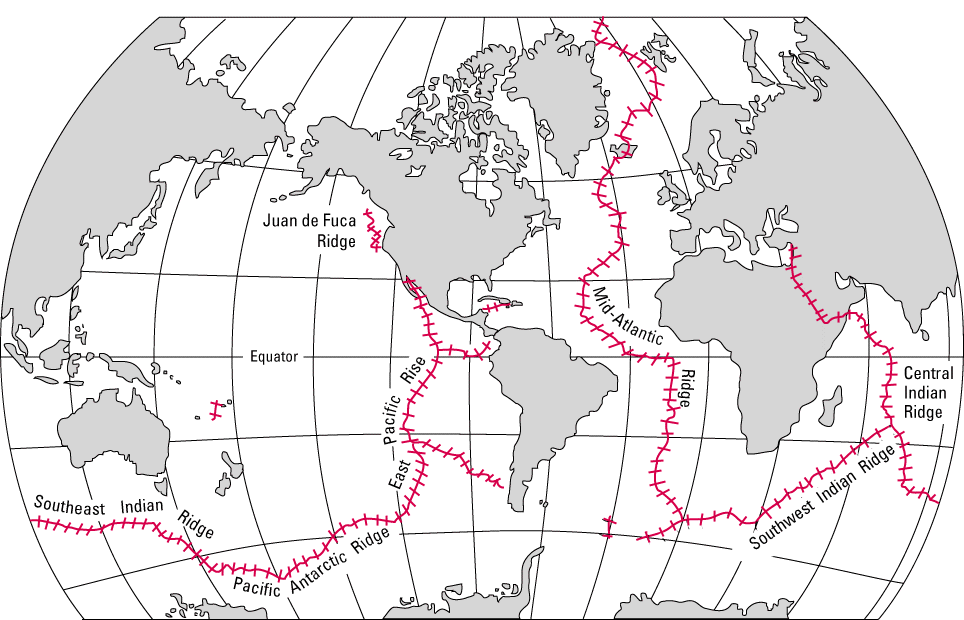|
|
Tectonic Setting
 20 20
Map of Iceland showing the Mid-Atlantic
Ridge cutting through the center of the island and the
distribution of volcanoes along that rift.
Iceland is located along
the Mid-ocean ridge in the Atlantic Ocean. The
mid-ocean ridge is an area where two plates are moving
away from each other. At the Mid-Atlantic ridge, the
North American plate and the Eurasian plate are moving
apart from each other. Magma upwells along the rift,
pushing the plates further and further apart. According
to Encyclopedia Britannica, “Because
of seafloor spreading and the movement of the ocean
floor and of the continents outward from the ridge, the
Atlantic Basin is widening at an estimated rate of 1 to
10 cm (0.5 to 4 inches) a year. Apart from seafloor
spreading, the Mid-Atlantic Ridge is also the site of
volcanic activity and earthquakes along some portions of
its length.”
19
 21 21
 22 22
A map of the globe showing all of the spreading ridges.
A topographic map of the Mid-Atlantic ridge, the reds
and oranges o
are higher points, while the greens and blues are lower
points.
However, Hekla does not always fit the normal profile
for a basaltic volcano along a mid-ocean ridge or in a
hotspot. Rittman describes the strange occurrences at
Hekla, “The [odd] eruptions of this strato-volcano take
place after more or less long periods of quiescence.
They begin with explosions which produce rhyolitic
pyroclasts, followed, as it were without transition, by
basaltic ash, scoriae and lavas” (p. 149).29
This is unique, because one would expect that
this volcano, fed by the mid-ocean ridge would simply
erupt basaltic lava. However, the possibility of a
deeper magma chamber, or some other factor that would
allow the magma to sit and crystallize before it erupts
would cause this change. In the graphs below, it is
obvious that the beginning of the eruption (the bottom
of the graph is dominated by high silica content magma
and ends with very basaltic lava. These eruptions
start out with explosions and tephra distribution,
sometimes even pyroclastic flows, but end in effusive
lava flows. These eruptions also often take place after
long periods of quiet, indicating that the amount of
time the magma sat and crystallized has an effect of n
the type of eruption.
 23 23
This chart shows depth on the Y-axis,
where the bottom would be material erupted first and
therefore at the bottom of the layers. The graph
shows the percent silica decreasing as the eruption
continues.
During other eruptions,
the volcano erupts just as scientists would predict with
low silica content lava throughout the entire event.
These eruptions are mainly effusive and non explosive.
|